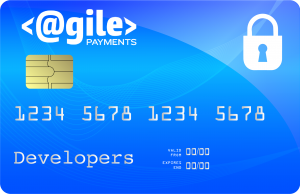Payment facilitation, or PayFac allows a SaaS company to act as a master merchant for its client base. The SaaS provider onboards clients via a non-intrusive application process — making it simple for the user base to quickly begin accepting customer payments by credit card.
For the customer, the streamlined application process requires minimal information. These users need to verify baseline “know your customer” (KYC) information for basic, required due diligence. While seamless for clients, there are subsequent, and significant, compliance controls and checks for the SaaS provider. Combined with technical requirements around payment integration, merchant funding, and risk-compliance demands, payment facilitation represents a significant decision for SaaS companies.
We have discussed what can go wrong with payment facilitation. Now let’s consider what makes payment facilitation — via platforms like Stripe, PayPal and Square — a compelling option for SaaS providers.
There are two major benefits:
Frictionless Onboarding: In most cases, SaaS users can begin accepting payments within an hour of applying. The immediacy and ease related to adding payment functionality is the primary reason platform users choose to adopt.
Revenue Generation: Revenues are dependent on transaction volume, frequency and size. For SaaS platforms, a large base transacting regularly is of massive benefit. Profit is made based on the spread, or margin, between the cost to process payments and what users pay for the application. For example, a SaaS vendor’s cost basis might average 2.4% (discount rate and per transaction fee blended) with a sell rate at 2.9% plus $0.30. The margin, or what the vendor makes, is .055% times the dollar amount of every transaction.
For easier visualization, refer to the chart below which shows revenue based on aggregate dollars processed.
| $ Processed per Month | Revenue |
|---|---|
| $1,000,000 | $5,500 |
| $5,000,000 | $27,500 |
| $20,000,000 | $111,000 |
| $100,000,000 | $550,000 |
If an average platform user processes $5,000 per month, you need 1,000 users to hit the $5,000,000 per month mark. [Note that these are gross revenues. Operating expenses vary by SaaS vendor, but must be accounted for when considering true profit bear potential].
If you can achieve significant usage and establish adoption improvements while getting your aggregate dollar volume in the multi-million ranges, then it is clear how this revenue stream can become a prized asset.
So, is Payment Facilitation the best option for you?
There is no universal, correct answer. Consideration must happen in light of this – can you attract enough users to generate the processing volume needed to make the initial and ongoing time commitment and expense worthwhile?
If so, you have the potential to create a substantial and relatively stable revenue stream to augment your standard line of business.
For some, exploring hybrid payment facilitation may be a viable alternative. This model offers many of the benefits of true payment facilitation but is uniquely attractive for lower volume vendors where recouping cost and ongoing compliance are of concern.
If you’re unsure what the best payment-processing solution is for you, Agile Payments can help.
{{cta(‘38729ff0-31c0-467e-9e28-1c1d0cf1996a’)}}





